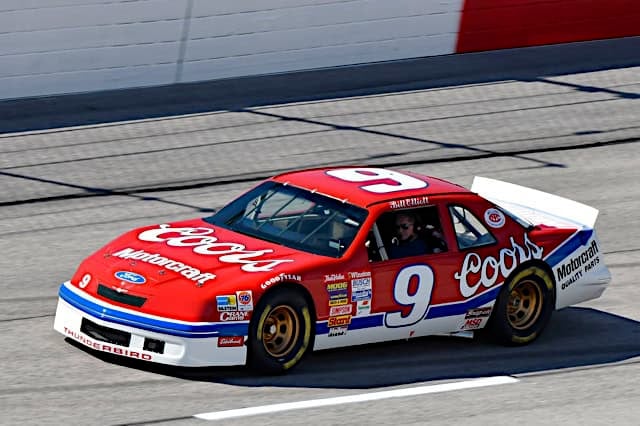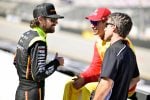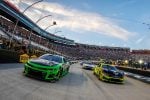The next edition in a long line of NASCAR licensed video games, NASCAR 25, is slated for release on Oct. 14.
NASCAR video games, like other genres, have continuously evolved to maximize the capability of the latest platform. Graphics, sound, presentation and gameplay have advanced to the point that software such as computer-based iRacing went from serving as entertainment to a training tool to actually hosting a professional series of virtual drivers.
But just how long ago did gamers begin racing in NASCAR?
The rise of at-home video gaming can be traced back to the mid-1980s, when Nintendo introduced its Nintendo Entertainment System, or NES. Characters like Mario and Zelda were the cornerstones of its success, but soon, sports games became a popular choice with fans of traditional sports. There were licensed games for football, baseball, hockey, basketball and other leagues.
There were racing games too. From cars to dirt bikes to remote controlled vehicles, you could compete in multiple arenas for racing glory, but not in NASCAR. That was until 1991, when one of the most recognizable names in the sport put his name on the first such game.
Konami published the first ever video game to be officially licensed by NASCAR, Bill Elliott‘s NASCAR Challenge for the NES. For a driver of Elliott’s caliber to not only appear in a game but have his face on the cover and name in the title, it conveyed authenticity. After all, many felt that a former NASCAR Cup Series champion likely wouldn’t put his stamp of approval on something that wasn’t worth playing.
The game did an acceptable job of providing a fun yet technical experience within the limits of the 8-bit NES. A player would type in their name and select from one of three cars based on cars that actually competed in 1990.
There was a Ford that closely resembled the red No. 11 owned by Junior Johnson and driven at the time by Geoffrey Bodine (Elliott became the driver of that car in 1992). Another option was a No. 5 Chevrolet loosely based on Ricky Rudd‘s Hendrick Motorsports ride. Then there was a Pontiac that looked very similar to Ken Schrader‘s No. 25 green and white Kodiak car, which was interesting considering that in 1990, Schrader actually drove a Hendrick Chevrolet as well.
The player would then choose between running a single race or a full season to try a win the championship. Race lengths could be modified from 10 miles to a full 500. The tracks available were Daytona International Speedway, Talladega Superspeedway, Sonoma Raceway and Watkins Glen International. A full season would consist of two races at each track, and points would be accumulated consistent with the point format at the time.
There was a surprising amount of car adjustability incorporated into the game. This included a choice between manual and automatic transmission as well as using a qualifying or race engine. The player could also change the spoiler angle, tire pressure and gear ratios. These changes were made primarily in a garage setting prior to starting the event.
After a command of “Drivers, start your engines,” the race would begin with a rolling start. While on track, the player’s view was limited to an in-car angle, while switching to an overhead view during pit stops.
Racers experienced tire wear and fuel consumption that required pit stops to be made during the event. There were no speeding penalties in NASCAR at the time, but it was possible to overshoot one’s pit box and have to make another attempt to pit on the following lap. Running out of gas would result in a DNF, as would a crash if damage was turned on.
Elliott was the only real-life competitor in the game, as all of the other computer-controlled cars were given fictitious names. He was also the most difficult to beat, as Elliott nearly always won any race that the player did not.
To further market the game, NASCAR offered a contest to fans. Anyone who could provide a 35mm photo of their championship score using full-race distance, manual transmission and normal damage setting was eligible to win a trip to the 1992 Daytona 500 and a new Ford Thunderbird.
In the years since, dozens of NASCAR games have been made for both computers and nearly every console. Like each driver, every edition has fans who consider that version to be the best NASCAR licensed video game.
But, thanks to Bill Elliott, there is no debate over which one was the first.
Frank Velat has been an avid follower of NASCAR and other motorsports for over 20 years. He brings a blend of passionate fan and objective author to his work. Frank offers unique perspectives that everyone can relate to, remembering the sport's past all the while embracing its future.
Follow along with @FrankVelat on Twitter.




